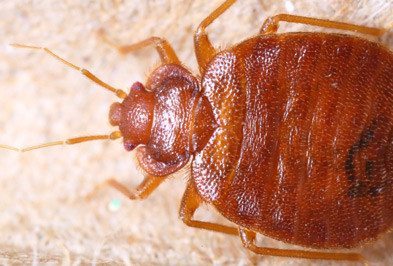Comprehending the Lifecycle of Parasites for Targeted Control Techniques
Comprehending the lifecycle of pests is a fundamental aspect of efficient bug management strategies. Through a much deeper understanding of how bugs evolve and thrive, tailored control techniques can be created to address certain factors in their lifecycle, inevitably leading to more successful insect management outcomes.
Value of Recognizing Bug Lifecycle
Understanding the lifecycle of bugs is essential for creating effective and targeted control strategies in pest management. By comprehending the numerous phases a pest goes via from egg to adult, parasite control professionals can recognize vulnerable factors in the lifecycle where treatment can be most effective. For instance, knowing when larvae are most active can assist establish the optimal timing for applying larvicides. Additionally, comprehending the life expectancy of a pest types can assist in forecasting population development patterns and prospective invasion threats.
In addition, identifying the specific environmental conditions required for each phase of the pest's lifecycle can lead decisions on habitat adjustment or exemption methods to minimize and disrupt the lifecycle bug populaces. This understanding allows pest administration specialists to implement aggressive measures rather than relying entirely on responsive therapies, resulting in more long-term and lasting parasite control services. Inevitably, a complete understanding of insect lifecycles empowers parasite control practitioners to tailor their techniques properly, lessening ecological impacts and optimizing control outcomes.
Secret Phases in Pest Advancement
To properly execute targeted control techniques in parasite management, a critical aspect depends on thoroughly recognizing and understanding the vital phases in parasite growth. Insect development usually consists of numerous key phases that are vital for their lifecycle and monitoring. The initial stage is the egg phase, where insects lay eggs that later on hatch into larvae. Larvae after that proceed into pupae, a phase where they undergo metamorphosis prior to becoming grown-up bugs. Comprehending these phases is vital as it assists in determining susceptible factors in the lifecycle where control procedures can be most effective.

Susceptabilities in Bug Lifecycle
Throughout the different stages of a bug's lifecycle, distinct vulnerabilities emerge that can be tactically targeted for reliable control measures. One critical susceptability depends on the egg phase, where bugs are usually more vulnerable to specific pesticides or organic control agents because of their soft outer covering, making them easier targets for treatment. In addition, the larval or nymph phase provides vulnerabilities as bugs undertake quick growth and development, requiring high power usage that can be manipulated by disrupting their food sources or introducing growth inhibitors. Pupal phases, defined by stability and improvement, supply a window for targeted control with physical obstacles or specific therapies that prevent successful appearance. Grown-up bugs, while much more resistant due to their reproductive ability, can still be vulnerable during breeding or egg-laying activities, which can be disrupted with scent catches or sanitation techniques. Understanding these susceptabilities in the parasite lifecycle is crucial for establishing specific and effective control techniques that successfully manage insect populations while decreasing ecological effect.
Executing Targeted Control Steps

Executing targeted control actions typically includes a multi-faceted method. This may include habitat adjustment to make the environment less friendly to parasites, such as removing standing water for insect control or securing access factors for rats. In addition, organic control techniques can be utilized, where natural killers or pathogens are introduced to maintain bug populaces in check.
Integrated Insect Monitoring (IPM) methods that incorporate various control actions in a collaborated and sustainable way are often the most reliable in attaining lasting parasite administration goals. By executing targeted control procedures based on a thorough understanding of bug lifecycles, bug populaces can be efficiently regulated while decreasing threats to human wellness and the setting.
Boosted Bug Administration Practices

Moreover, the unification of organic control agents, such as blog all-natural predators or microorganisms of pests, can help in reducing dependence on chemical pesticides and advertise a more balanced community. Implementing physical obstacles and traps can likewise belong to boosted insect administration practices, supplying safe and targeted services for bug control. In addition, using pheromones and other semiochemicals can interfere with pest mating patterns and interaction, resulting in lowered pest populaces in time.
Final Thought
By identifying essential phases in bug growth and vulnerabilities in their lifecycle, targeted control measures can be executed to decrease parasite populaces. Improved bug management methods can aid reduce the dependence on broad-spectrum chemicals and promote more ecologically pleasant and lasting bug control methods.
Understanding the lifecycle of bugs is essential for creating effective and targeted control approaches in insect management. By comprehending the different phases a pest goes through from egg to grownup, parasite control professionals can determine vulnerable points in the lifecycle where treatment can be most effective. Inevitably, a detailed understanding of bug lifecycles encourages pest control professionals to tailor their strategies effectively, decreasing ecological effects and making the most of control outcomes.
By executing targeted control measures based on a detailed understanding of insect lifecycles, pest populaces can be effectively managed see this website while reducing dangers to human health and wellness and the environment.
By determining vital stages in pest advancement and vulnerabilities in their lifecycle, targeted control measures can be applied to minimize parasite populaces.